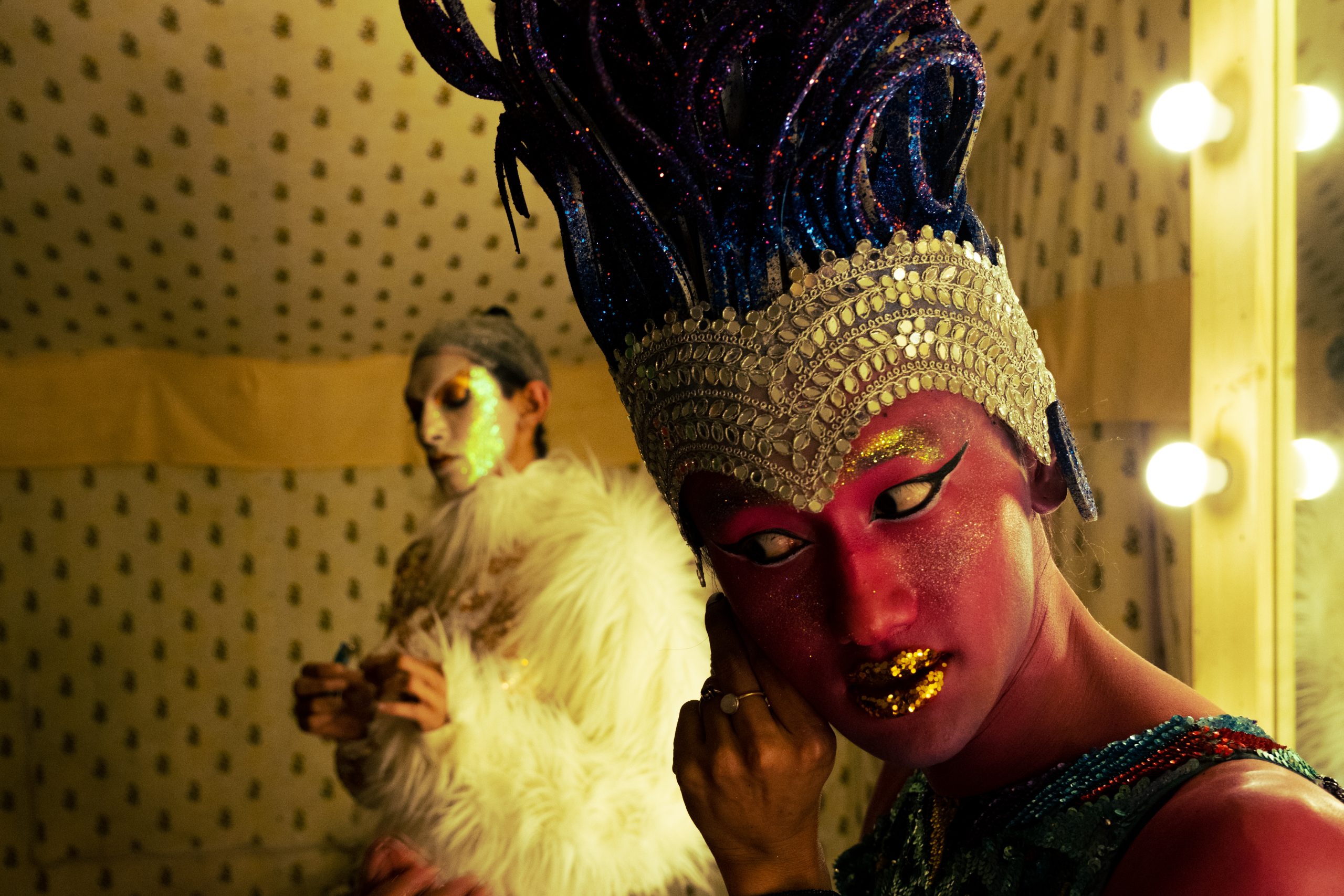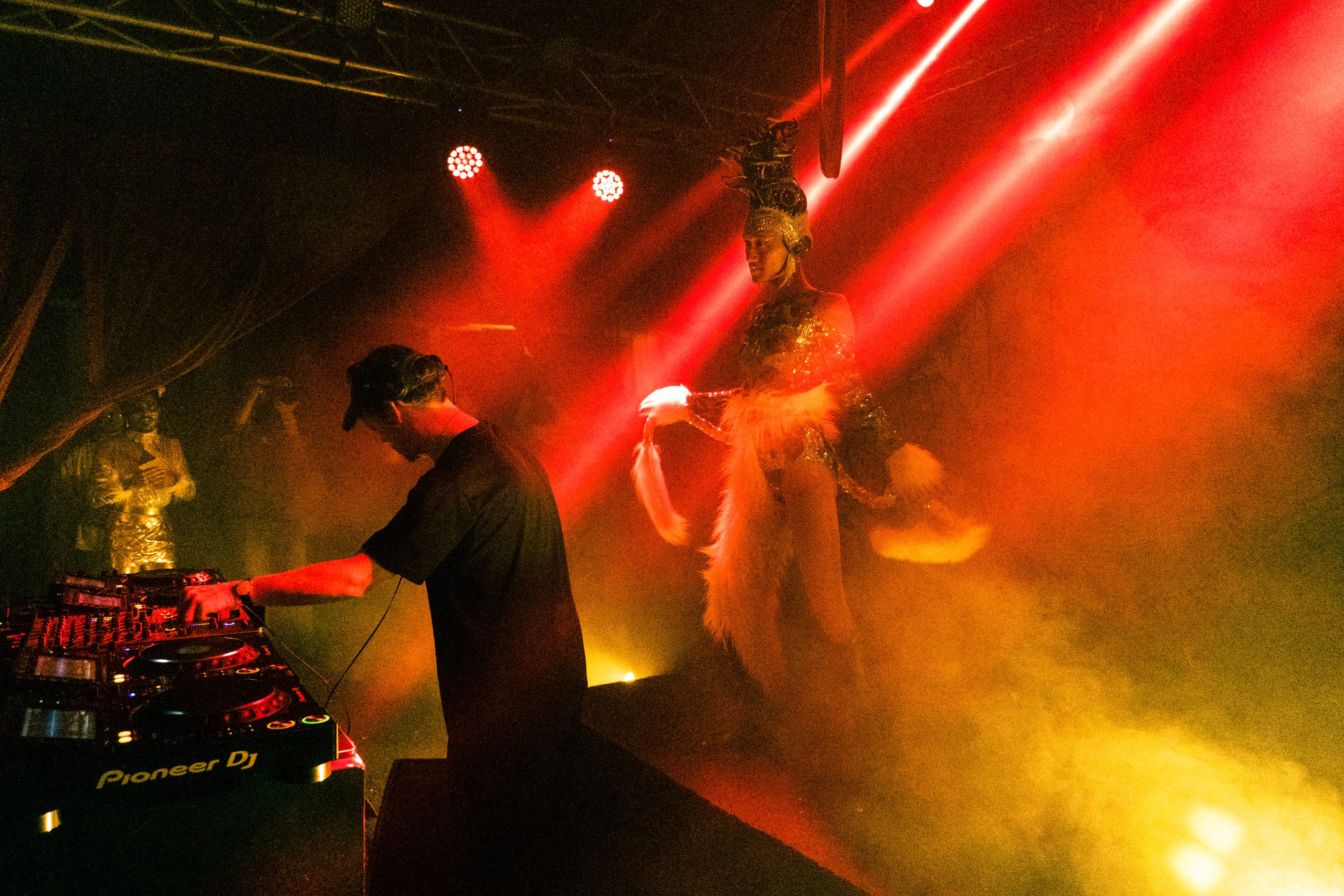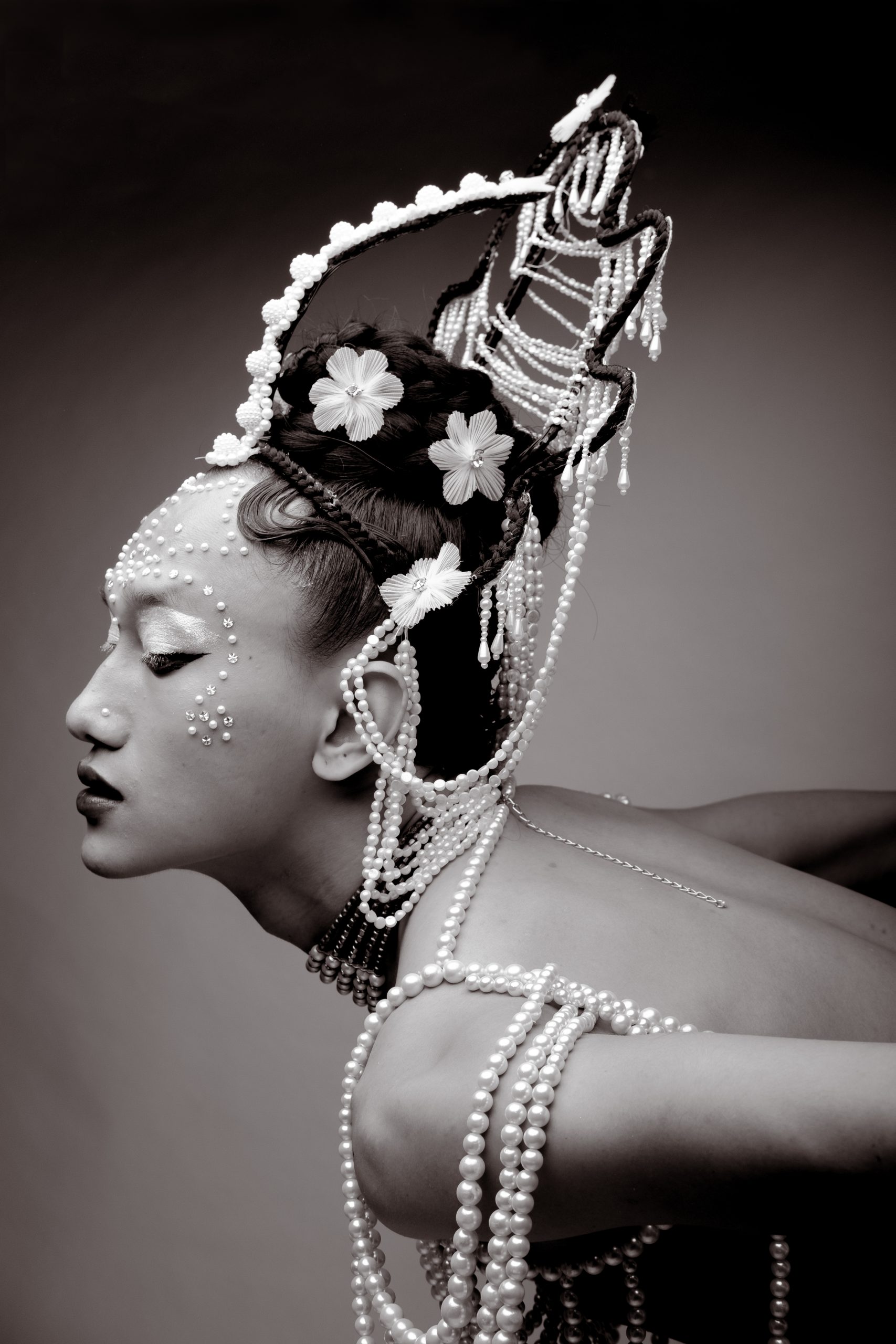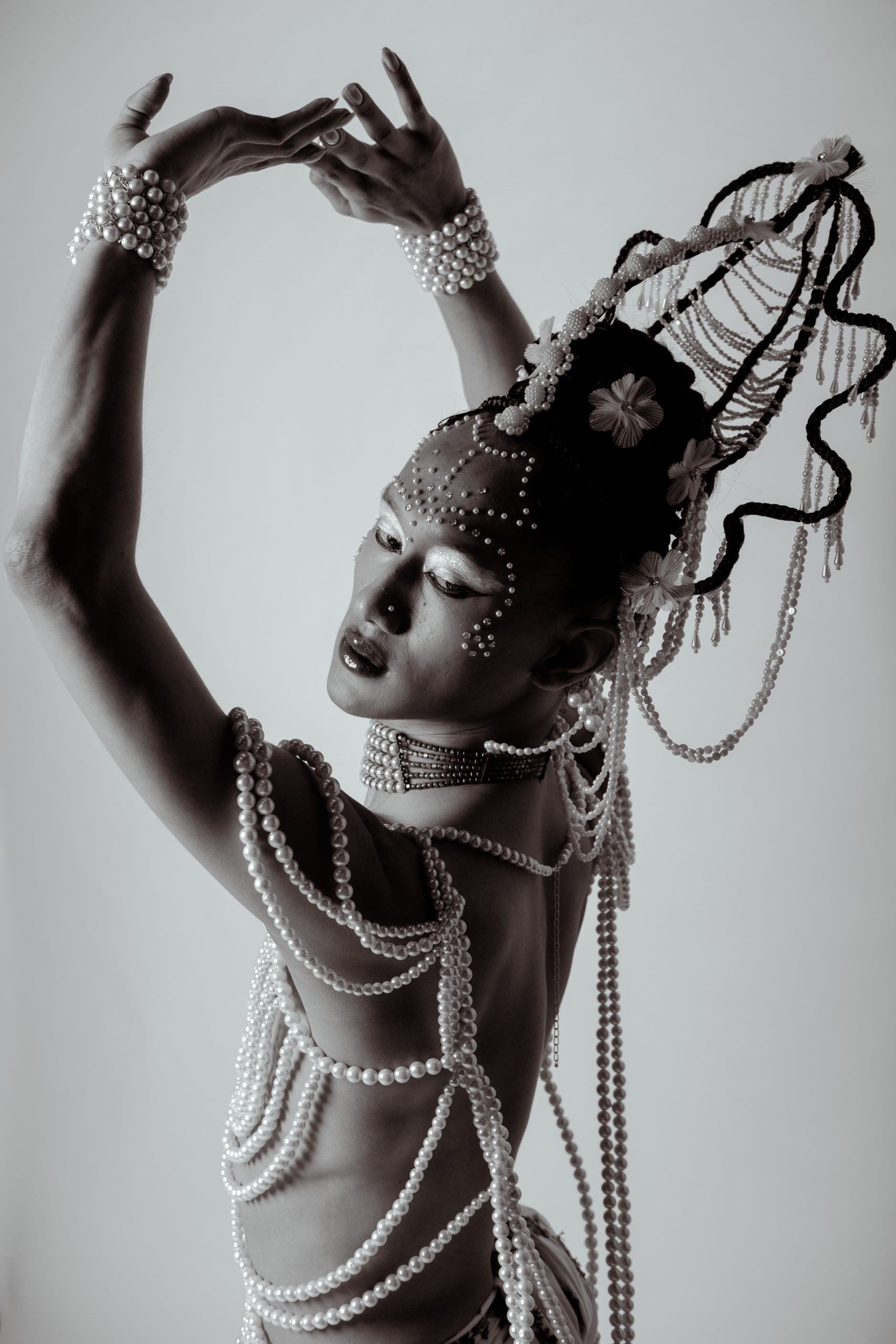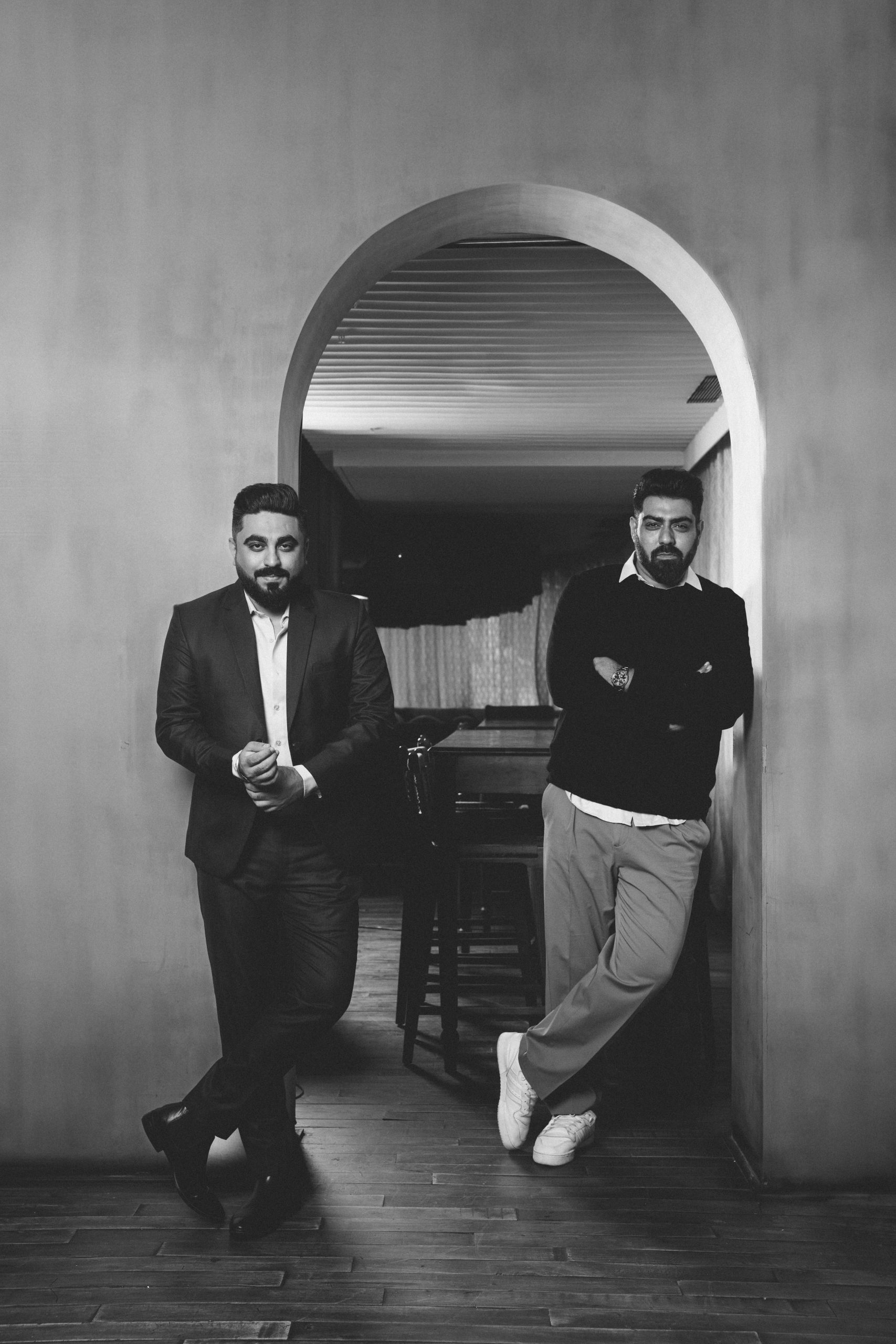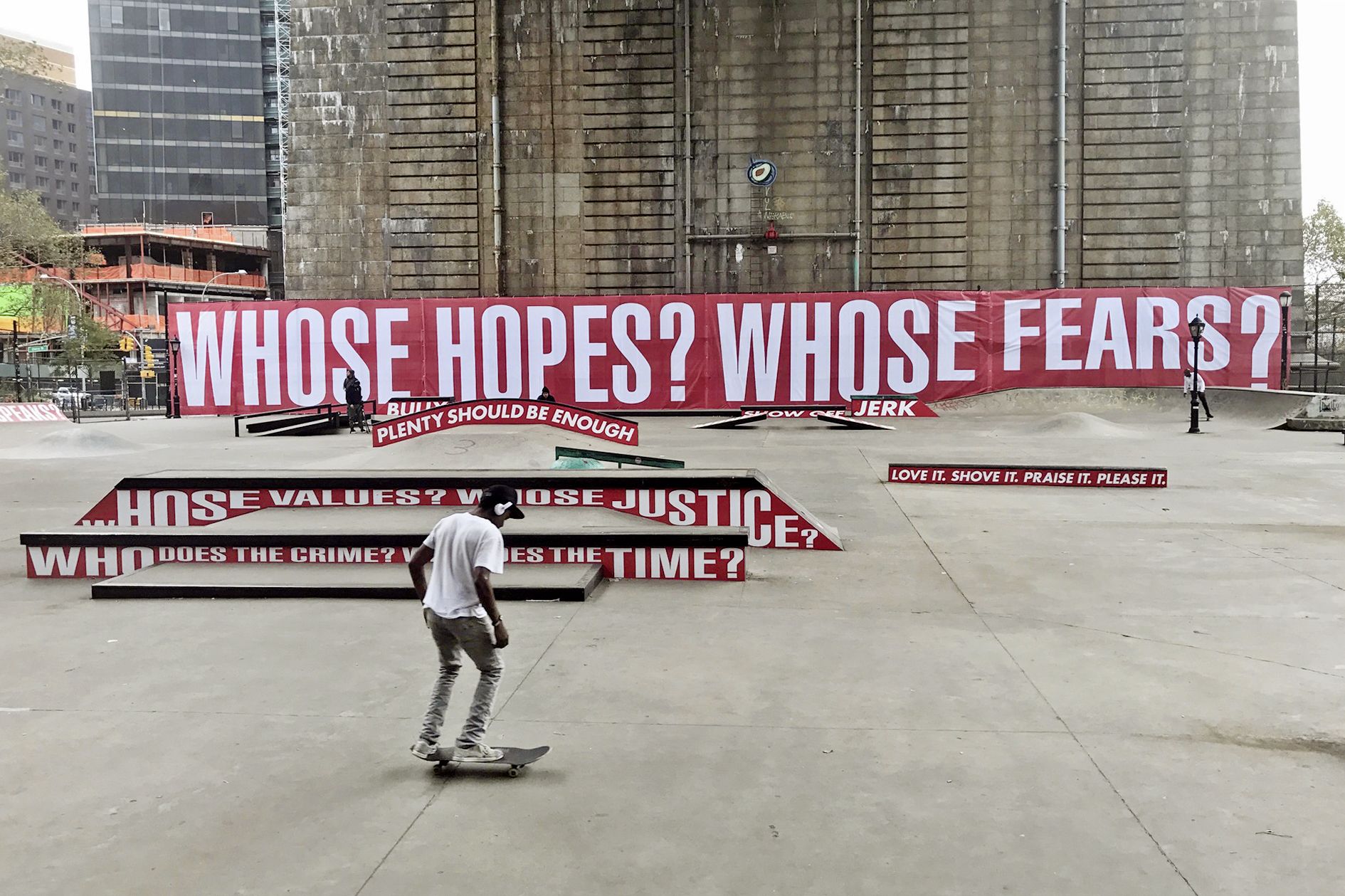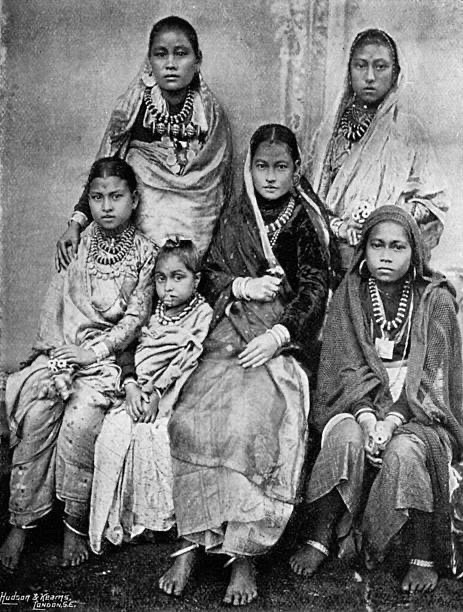There’s something endearing about modern technical interviews — the muted hellos, the checking of audio, the brief vulnerability of preparing to be seen. The conversation always begins mid-thought, as the best ones often do.
In fashion, as in conversation, the most compelling moments occur when personal history is cut from the same cloth as cultural commentary.
“I first did drag in high school,” the sentence lands matter-of-factly from Yaikhom Sushiel, a creative and drag artist, immediately shifting the air. It was during Joseph and the Amazing Technicolor Dreamcoat when young Sushiel from Imphal first learned that the distance between who you are and who you might become is perhaps the space of a costume change. In those early designs, the seeds of a fashion philosophy were already taking root — it hinted at the kind of self-fashioning that would one day become central to their work.
But back then, they had no concept of drag.
“I was going to be that queer person who does not rely on makeup,” they confess, a laugh escaping them, suggesting how radically perspectives can shift. From makeup sceptic to drag artist, the pivot was absolute. This revelation came late during their design education — the recognition that fashion and makeup could become both armour and autobiography. “Fashion is identity work,” Sushiel states. “I remember just looking forward to the process. My NIFT graduation project became about creating Dame Imfala — not just as a persona but as a comprehensive design philosophy with its own material language and cultural coordinates.”
“Existing as Dame Imfala on stage or offstage,” Sushiel declares, “is very important. It’s an assertion that all these queer stories matter and deserve centre stage.” The words land with the weight of someone who has fought for every inch of visibility. It’s not just a queen who performs, but someone who actually tells stories and commands space through fabric and form.
Some conversations — like some identities — begin as idle musings, yet grow roots when given proper space to be heard.
Being a drag artist in India means existing in multiplicity without apology. “It’s a mix of very wild, but also very beautiful and equally frustrating, yet also very empowering moments,” Sushiel says, navigating these contradictions with fluid intelligence. The isolation is real — old school friends who can’t appreciate what they’re doing, and audiences who want them to be more “palatable.” But so is the liberation. The solo nature of their practice adds another layer of complexity.
Dame Imfala takes the stage at Magnetic Fields Festival, 2022. Photographed by Aditya Sinha
“I am a one-person army — I’m doing my own hair, my own makeup, sometimes costumes.”
This DIY ethic isn’t born from choice alone but necessity, yet becomes part of the artistic statement. Each look is a handcrafted manifesto — part sculpture, part costume — where fabric, form, and face become the medium. In this solo atelier of identity, fashion isn’t just worn, it’s composed, performed, and lived.
“Between artist and homeland, there exists an ongoing negotiation,” Sushiel explains, navigating the delicate balance between cultural appreciation and appropriation.
Their fashion references come directly from early memories — the stiffened textures of the phanek (traditional Manipuri sarong) that requires specific care, the movement of classical and folk dance costumes they trained in since childhood. “Fashion for Dame Imfala becomes this moving archive of who I am, who I have been growing up, and the people and places that have shaped me,” they note. Reflecting deeply, they add, “I am the kind of person who is scared of appropriating my own culture.”
This fear isn’t paranoid but precisely calibrated. Manipur, they note, is “very tolerant, yet conservative.” Their father, an artist who holds performance and culture as sacred, represents the community voices that must be honoured, even as boundaries are pushed. When asked about Western influence versus indigenous tradition, Sushiel offers a nuanced perspective, “I found drag because of the legacy of Western drag, but I think I use that history as a lens to reflect on my own.” It’s not about rejecting global influences but about using them to excavate local histories, to speak “in a voice that’s recognisably from the Northeast.”
“I love silhouettes that make you look powerful,” Sushiel shares, gravitating toward corseted waists expanding into exaggerated arms, mutton sleeves that command space, proportions that distort rather than flatter. “I like to create looks that make people pause,” they explain. “Because drag does give me agency over how I’m seen and perceived.”
This pause — that moment of recognition, confusion, recalibration — becomes fertile ground for deeper exchanges.
Her series Apsara, 2023 — employing pearls and more to create fresh looks. Photographed by Aditya Sinha.
The future lies in expansion — working with prosthetics, creating “more immersive and tactile” experiences, and developing movement-based performances that go beyond club music. It continues with innovation across the board — for example, a piece of wearable art made from chatai mats, represents this evolution toward drag as installation.
“This body, this vessel, holds memory and a lot of tension,” Sushiel reflects, their voice carrying ancestral presence alongside contemporary possibility. When Sushiel performs as Dame Imfala — whether at a corporate sensitivity workshop or an art fair — they’re not just entertaining, but asserting: “I come from somewhere.”
As our conversation winds down, Sushiel offers a final reflection: “I hope more people are inspired. They don’t have to do drag, but understand the essence of it… because we have so much history of drag in our own country and our own history.” The careful construction of a garment becomes inseparable from the vulnerable construction of self. For Sushiel, fashion isn’t about standing out. It’s about showing up — as a body shaped by place, politics, and memory. Each look is built, not borrowed. Once it’s on, there’s no mistaking who it belongs to. And in that space — sewn, not given — new identities become possible.
Words by Shravni Sangamnerkar
Photographs by Aditya Sinha.
